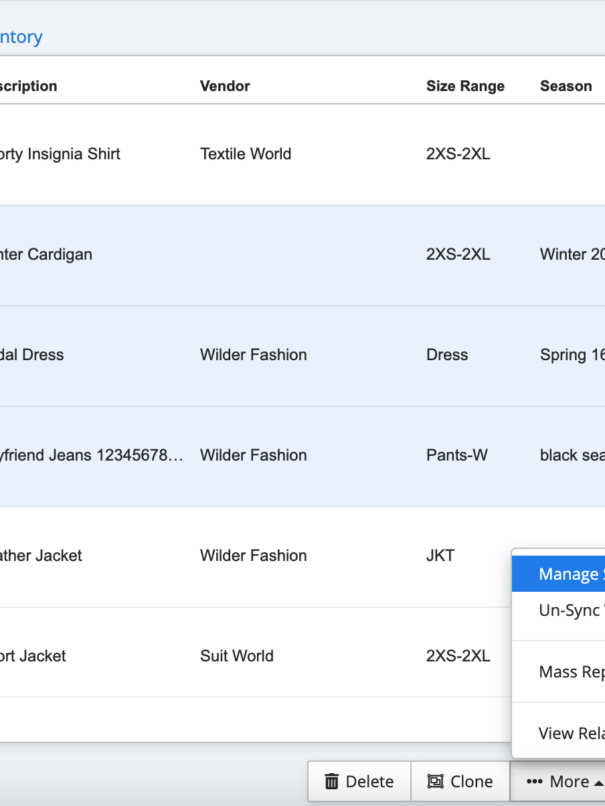If you run an apparel brand, you are aware of how quickly things change in the fashion business. This makes it essential for clothing companies to continually develop new products, raise the bar on quality, and follow the most recent fashion trends.
When trying to stand out in a crowded and fast-moving industry, agility is essential. For this reason, many fashion and clothing businesses are embracing the digital transition and turning to apparel PLM software in order to strengthen their competitive advantage.
But what specifically can you gain from applying apparel PLM software to your clothing business? This post describes some of the most important benefits that fashion brands can expect from apparel PLM software.

Photo by Jazmin Quaynor on Unsplash
Why Use Apparel PLM Software?
PLM (Product Lifecycle Management) is software used to manage the entire product lifecycle, from conception to disposal. Centric PLM offers complete transparency of vendor collaboration, product innovation, design, development, and production.
Apparel PLM software is used by fashion brands to shorten the time it takes to introduce new products to the market and to lower manufacturing and development expenses. This type of software is often integrated with enterprise resource planning (ERP) systems.
Many clothing brands now place a high priority on apparel PLM software. Companies focused on growth have understood the value of collaborating with vendors and internal teams outside of spreadsheets and email. Businesses are no longer willing to spend time and money performing manual operations that are prone to error and do not support real-time cooperation. Without suitable apparel PLM software, many of the rapidly growing clothing brands would not have been able to expand effectively.
What are the different types of PLM solutions?
Product lifecycle management solutions come in many varieties, each with a unique feature set. PLM technology can also vary greatly. Traditional PLM systems are “on-premise” solutions, where the PLM software is set up to run on a dedicated server. These PLM systems need to be highly customized, and they need to be managed by internal IT staff. Every upgrade must be installed as a separate version by the software provider because upgrade cycles occur only once or twice a year.
Cloud PLM software solutions like ApparelMagic are created entirely in the cloud and accessible from anywhere in the world. As a result, PLM becomes more economical and deploys more quickly. Cloud PLM solutions leverage cutting-edge user experience and user interface design principles. All users of a cloud PLM system are always using the most recent version, and upgrade cycles are typically happening every eight weeks.
Ways PLM Software Apparel Can Help Your Businesses Grow
So, how exactly can PLM software help your apparel business grow? Here are 7 benefits of using PLM software, especially one made with clothing brands in mind:
1. Improved communication and productivity
A product lifecycle management system serves as a “single source of truth,” which means that all data originates from the same location. This allows suppliers, designers, production, and managers to always use accurate, real-time data related to designs, materials, collections, colors, and sizes. As a result, communicating and collaborating with vendors and other team members requires less time, because there is no longer a need to look for pertinent data through spreadsheets or emails.
With a cloud-based PLM system, information sharing improves because PLM serves as a knowledge management foundation that is accessible to everyone in the company. By streamlining their business functions with PLM, fashion businesses can boost productivity, concentrate on product design and planning of collections, as well as improve supplier collaboration.
2. Cost reduction
Fashion companies can boost tech pack accuracy to drastically lower the highly expensive sample and product faults, by working together across internal employees and external vendors in a PLM system. Working with a PLM system ensures that product data management is thorough and constantly updated, as it is all collected in one location. Workflows won’t be slowed down by employees looking for information between Excel sheets and local folders, and they will always have access to the most recent information. This way, effective information exchange can help lower expenses.

Photo by John Cameron on Unsplash
A fashion PLM system also aids in streamlining the production and sourcing processes. It increases supplier collaboration processes and product margins, with the aim to save costly last-minute shipping expenses and prevent misunderstandings that could delay sourcing. In the end, this enables apparel brands to simultaneously cut expenses and boost output.
3. Improved decision making
With price simulations, dashboards, and reports, PLM offers complete visibility into material and product costs. This enables data-driven decision-making, makes it simpler to plan collections, and deploys the right products at the right prices.
Furthermore, fashion PLM enables quality control and compliance through supplier audits and the measurement of AQL (Acceptable Quality Limits). In this way, fashion brands can evaluate which suppliers have high cancellation rates, and which deliver the best samples – in order to make sure they choose the most effective and suitable manufacturers.
4. Transparent product tracking
Lack of communication throughout the supply chain is one of the biggest obstacles many apparel companies encounter when launching new items, but product lifecycle management software can help by boosting visibility and transparency. Product lifecycle trackers make it easier for all employees to be aware of the state of each product. This way, managers and product teams can identify problems in the supply chain early on, and avoid missed deadlines and cost overruns.
5. Increased time-to-market
The fashion industry is one of the few industries that value the prompt supply of new products. You must be quick enough to produce new clothing every season, launch your line first, and reach buyers before your competitors. But it’s not simple. Before anyone can purchase your clothing, there are many procedures to be completed, starting with the designer’s initial concept and ending with mass production and delivery to stores.
However, by using PLM for fashion, you can drastically speed up the process and ensure faster time-to-market. PLM software encourages transparency by gathering all information and ensuring that it is available to everyone involved. This allows you to identify where you can reduce steps and save time, as well as make it simpler for your staff to work together and follow business processes effectively.
6. Regulation compliance
Fashion brands are under a lot of pressure to adhere to the regulations and standards that are being added. All products must adhere to the necessary requirements. This is particularly challenging if you offer a wide range of products, such as shoes, handbags, sunglasses, and other items.
Brands can easily keep track of compliance requirements and create vendor requirement lists with the aid of fashion PLM software. Since all the data relevant to a certain project is saved in one location, you may request audits on the platform to save the auditors time on data entry. Auditor searches through emails or physical copies of papers are also not necessary. By doing this, the likelihood of human error is reduced and efficiency is raised.
7. Centralized hub to brainstorm ideas
PLM provides you with a central location to generate design ideas. If new ideas are visible to everyone involved in a project, they are more likely to be found, discussed, and put into practice. It offers everyone, regardless of location, a chance to participate in the creative process.
All of your designs, styles, prints and other visuals can be kept in one location. They can be tagged for quick search access, and you can utilize attributes to identify designs that go well with your concepts. This eliminates many of the inaccuracies that might happen when using real, paper-based documentation, and enables new staff to swiftly catch up on what has been accomplished thus far.
The Bottom Line
Because of how fiercely competitive it is, the fashion industry doesn’t leave much space for error. In a world where trends are changing with incredible speed, fashion brands need to be quick and effective when it comes to getting things out of their studios and into the hands of relevant customers.
Utilizing a fashion software solution that can handle that level of speed necessitates using a PLM created expressly with the apparel industry in mind. If you own or work for a fashion brand, a PLM inclusive apparel software like ApparelMagic can make your life much simpler.







